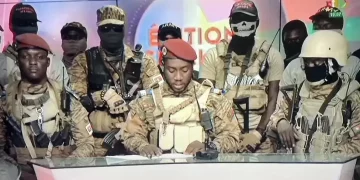[ad_1]

The Department of Health will need to address the lack of infrastructure at some schools, as well as provide a procedure for a staggered return to classrooms, in order to safely recommence with the school year, education unions have said.
Basic Education Minister Angie Motshekga was expected to brief the media on Monday with regard to when schools will reopen, as well as what steps are to be taken to prevent the spread of the coronavirus among learners, but the briefing was postponed indefinitely.
In a statement issued by the SA Democratic Teachers’ Union (Sadtu) this week, concerns were raised about the safety of teachers, staff and learners.
“Above all, we are concerned about the readiness of the provincial departments with regard to the availability of health and safety essentials that have to be put in place in the learning institutions at least two weeks before any activity can take place,” said Sadtu’s general secretary, Mugwena Maluleke.
Schools have been closed since 18 March and a number of plans have been proposed to salvage the school year, including the possible cancellation of school holidays for the remainder of the year.
It is expected that schooling will be phased in grade by grade, under the easing of lockdown regulations from Level 5 to Level 4 on 1 May.
‘Phasing in is only option’
“The phasing in of classes is the preferable and only option,” said Paul Colditz, the CEO of the Federation of Governing Bodies of SA Schools (Fedsas).
This will allow schools to prepare for and implement standard operating procedures, which he believes will be shared by the education department prior to schools opening.
“If schools open within the next two to three weeks, the school year can be salvaged. It may look different, but the curriculum can be completed,” Colditz says.
A phased approach to opening schools, while the best option, brings with it some challenges, said National Professional Teachers’ Organisation of SA (Naptosa) deputy president Anthea Cereseto.
“What happens in the case of older children taking care of their younger siblings? Who will look after the younger children if the older ones are at school?” she says.
Distancing the biggest challenge
Physical distancing among learners may be one of biggest challenges facing schools once classes resume. Schools may have to employ a case-by-case approach, depending on what model is shared by Motshekga eventually. This could likely see classes taking place in small groups.
Maluleke has suggested desks be placed at least 1.2 metres apart and are fitted with desk screens.
“Social distancing will have to be observed and monitored during break times and feeding sessions,” he said.
National Teachers’ Union (Natu) deputy president Allen Thompson believes classes will have to be reduced to allow for adequate physical distancing.
“Overcrowded classrooms are a serious problem for social distancing. The department will have to put in place systems, such as subdividing classes,” he said.
This could necessitate the rollout of mobile classrooms and the employment of additional teachers, Thompson adds.
It would also include infrastructure upgrades to water supply and toilets at schools, hand sanitisers and masks, and the employment of staff to deep clean school buildings and learner transport.
Maluleke adds that, before schools can open, the department will need to ensure schools have been thoroughly disinfected, and proper sanitation will need to be in place. This includes the delivery of water tankers and flushing toilets.
No new date has been set for when the department will update the nation on the plan for the school calendar.

















